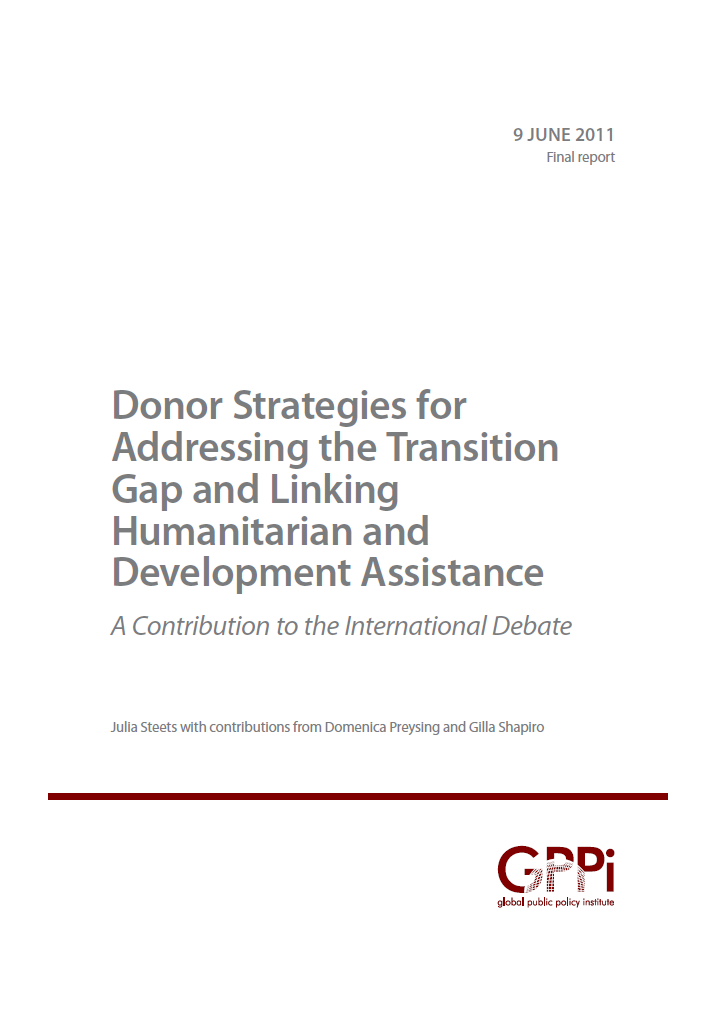Donor Strategies for Addressing the Transition Gap and Linking Humanitarian and Development Assistance A Contribution to the International Debate Steets, J. (2011)
Humanitarian assistance and development cooperation pursue different aims and follow different principles. Their separation – while important to protect the independence of humanitarian action – has negative side effects. This paper seeks to contribute to the international debate by clarifying concepts, analyzing these effects and exploring donor strategies for addressing them.
Strengthening the links between humanitarian assistance and development cooperation is essential for making international assistance more effective and more efficient. Donors have various options for doing so and need to take strategic decisions. They can either opt for addressing one of the effects of the disconnect – the funding gap for transition – through specialized funding instruments. This promises quick and visible results, but exacerbates the underlying problem. Alternatively, they can opt for the more arduous route of reducing the disconnect through either decentralization, intra-governmental coordination, incentives for partner organizations or a combination of these measures.
Bibliographic information
Steets, J. (2011). Donor Strategies for Addressing the Transition Gap and Linking Humanitarian and Development Assistance A Contribution to the International Debate Global Public Policy Institute, Berlin, Germany.
Filter / Tags
English

